第24章
"Doubtless you are familiar with the stony skeleton of our Madrepore, as it appears in museums. It consists of a number of thin calcareous plates standing up edgewise, and arranged in a radiating manner round a low centre. A little below the margin their individuality is lost in the deposition of rough calcareous matter. . . . The general form is more or less cylindrical, commonly wider at top than just above the bottom. . . . This is but the skeleton; and though it is a very pretty object, those who are acquainted with it alone, can form but a very poor idea of the beauty of the living animal. . . . Let it, after being torn from the rock, recover its equanimity; then you will see a pellucid gelatinous flesh emerging from between the plates, and little exquisitely formed and coloured tentacula, with white clubbed tips fringing the sides of the cup-shaped cavity in the centre, across which stretches the oval disc marked with a star of some rich and brilliant colour, surrounding the central mouth, a slit with white crenated lips, like the orifice of one of those elegant cowry shells which we put upon our mantelpieces. The mouth is always more or less prominent, and can be protruded and expanded to an astonishing extent. The space surrounding the lips is commonly fawn colour, or rich chestnut-brown; the star or vandyked circle rich red, pale vermilion, and sometimes the most brilliant emerald green, as brilliant as the gorget of a humming-bird."And what does this exquisitely delicate creature do with its pretty mouth? Alas for fact! It sips no honey-dew, or fruits from paradise. - "I put a minute spider, as large as a pin's head, into the water, pushing it down to the coral.The instant it touchedthe tip of a tentacle, itadhered, and was drawn in with the surrounding tentacles between the plates. With a lens I saw the small mouth slowly open, and move over to that side, the lips gaping unsymmetrically; while with a movement as imperceptible as that of the hour hand of a watch, the tiny prey was carried along between the plates to the corner of the mouth. The mouth, however, moved most, and at length reached the edges of the plates, gradually closed upon the insect, and then returned to its usual place in the centre."Mr. Gosse next tried the fairy of the walking mouth with a house- fly, who escaped only by hard fighting; and at last the gentle creature, after swallowing and disgorging various large pieces of shell-fish, found viands to its taste in "the lean of cooked meat and portions of earthworms," filling up the intervals by a perpetual dessert of microscopic animalcules, whirled into that lovely avernus, its mouth, by the currents of the delicate ciliae which clothe every tentacle. The fact is, that the Madrepore, like those glorious sea-anemones whose living flowers stud every pool, is by profession a scavenger and a feeder on carrion; and being as useful as he is beautiful, really comes under the rule which he seems at first to break, that handsome is who handsome does. Another species of Madrepore (11) was discovered on our Devon coast by Mr. Gosse, more gaudy, though not so delicate in hue as our Caryophyllia. Mr. Gosse's locality, for this and numberless other curiosities, is Ilfracombe, on the north coast of Devon. My specimens came from Lundy Island, in the mouth of the Bristol Channel, or more properly from that curious "Rat Island" to the south of it, where still lingers the black long-tailed English rat, exterminated everywhere else by his sturdier brown cousin of the Hanoverian dynasty.
Look, now, at these tiny saucers of the thinnest ivory, the largest not bigger than a silver threepence, which contain in their centres a milk- white crust of stone, pierced, as you see under the magnifier, into a thousand cells, each with its living architect within. Here are two kinds: in one the tubular cells radiate from the centre, giving it the appearance of a tiny compound flower, daisy or groundsel; in the other they are crossed with waving grooves, giving the whole a peculiar fretted look,even more beautiful than that of the former species. They are Tubulipora patina and Tubulipora hispida; - and stay - break off that tiny rough red wart, and look at its cells also under the magnifier: it is Cellepora pumicosa; and now, with the Madrepore, you hold in your hand the principal, at least the commonest, British types of those famed coral insects, which in the tropics are the architects of continents, and the conquerors of the ocean surge. All the world, since the publication of Darwin's delightful "Voyage of the Beagle,"' and of Williams' "Missionary Enterprises," knows, or ought to know, enough about them: for those who do not, there are a few pages in the beginning of Dr. Landsborough's "British Zoophytes," well worth perusal.